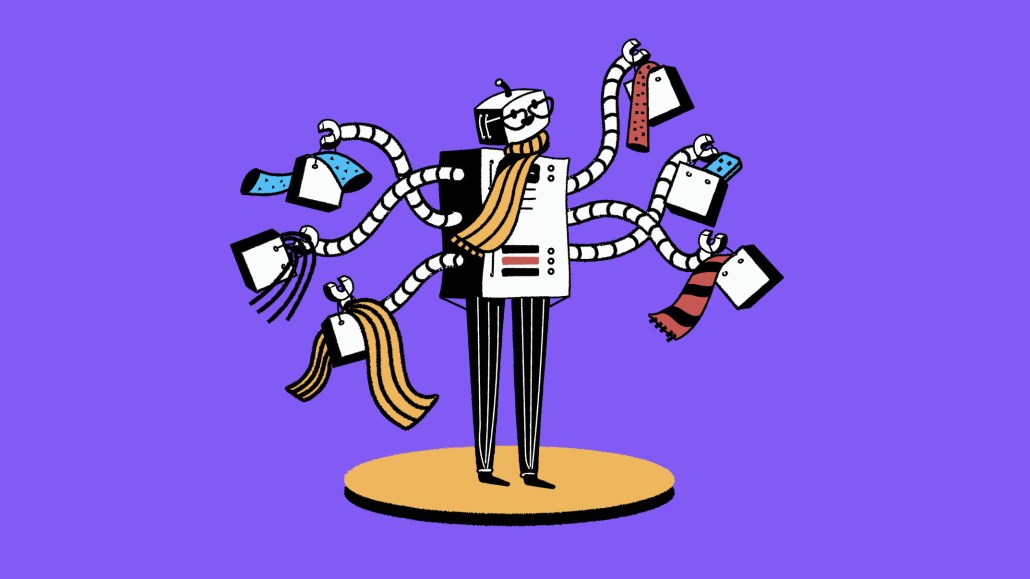Save 50% on a 3-month Digiday+ membership. Ends Dec 5.
‘As good a chance as anybody’: Verizon Media looks to build on its DSP hot streak

The coming cookie changes are going to scramble the pecking order of media (except for Google, of course). Verizon Media’s hoping that shake-up will add to the momentum gathering behind its DSP.
Over the past six months, Verizon Media has signed a slew of partnerships to bolster different facets of its platform, becoming the first DSP to integrate measurement from Catalina, adding digital out-of-home inventory via a partnership with Place Exchange and addressable TV inventory with Dish Media.
It has also made several moves to expand its two identity ecosystems, ConnectID, a deterministic solution announced in December, and Next-Gen, a contextual complement announced last week. In March, Verizon announced ConnectID partnerships with Epsilon, around the agency’s CORE ID, and with CafeMedia, the ad management platform that’s been gobbling up new sites to manage since last year.
While Verizon doesn’t have the scale of competitors such as Amazon DSP or Google’s DV 360, buyers and observers say it is making a strong case that it represents the best of the rest: An Advertiser Perceptions report published in December 2020 found that a majority of marketers believe Verizon’s DSP is well-positioned to deal with life after third party cookies — the only DSP besides Amazon DSP or DV360 to earn that distinction.
“They have kind of separated themselves from others that have had historical strengths,” said Kevin Mannion, the president and chief strategy officer of Advertiser Perceptions, which has been publishing bi-annual reports on how ad buyers regard DSPs for the past five years. “Verizon has held their own. The others kind of haven’t kept pace.”
Verizon’s ability to maintain its lead over the DSPs in its wake will probably boil down to whether it can keep this deal-making up. As buyers count down the months until Google phases out third-party cookies in its browser, the new landscape’s winners and losers are going to be determined, in large part, by who is able to offer as much scale and flexibility across these emerging technologies as possible.
“If all of a sudden they’ve put together a good conglomerate of publishers, they’ve got as good a chance as anybody,” said Jay Stocki, the data practice lead at Prohaska Consulting.
Ad position: web_incontent_pos1
In a year that most publishers would like to forget, Verizon Media Group posted 11% year over year growth in the fourth quarter of 2020, on revenues of $2.3 billion, the first time the media unit had posted year over year growth in a quarter since Verizon acquired Yahoo four years ago.
One of the biggest contributors, Verizon CFO Matthew Ellis told analysts in January, was Verizon Media Group’s DSP business, which grew 43% in the fourth quarter.
Though Verizon Media has faced Wall Street scrutiny for years, with analysts occasionally musing that the telecommunications business might be better served spinning it off, observers say its struggles as a direct media seller obscured a strong foundation in the programmatic markets.
“In programmatic, they were doing a lot better than they were as a media player,” Mannion said. “As they integrated into what became AOL and Oath and then Verizon Media, there were a couple years where I think the market had a tough time tracking who they were.”
But as buyers have wrapped their heads around Verizon’s DSP, Verizon has taken pains to keep things simple, even as it’s expanded the scope of what its platform can do. “The first thing is: make it easy,” Iván Markman, Verizon Media’s chief business officer, said. “Map things to frameworks that the buy side and sell side are used to.”
Ad position: web_incontent_pos2
For example, Markman said, many of the segments available to buyers using Verizon’s Next-Gen targeting are identical to the ones buyers can currently target with third-party cookies. “Rather than doing something different, we can say, ‘it’s the same thing,’” Markman said.
Verizon also invested, Markman added, in its service layer, adding specialists who could help buyers navigate the platform’s offerings. That investment helped it build market share — Advertiser Perceptions’ survey found that among respondents who use DSPs as a managed service, Verizon was the second most popular — choice and it helped preserve business last year, particularly as so many people navigated the early roller coaster ride of the pandemic.
“We’re very service-oriented,” Markman said. “We work hard in terms of helping folks through growth. Folks really needed to pivot their strategies [last year].”
Verizon will also need ad buyers to consider its DSP as they continue to test and figure out how they will adapt to a post-third party cookie world.
“Advertisers need to do a lot more testing and learning here,” Markman said. “There’s a sense that, because Google hasn’t made the changes yet, it doesn’t matter yet.”
This story has been updated. An earlier version said Verizon Media had formed a partnership with Nielsen Catalina, rather than Catalina.
More in Media

Digiday+ Research Subscription Index 2025: Subscription strategies from Bloomberg, The New York Times, Vox and others
Digiday’s third annual Subscription Index examines and measures publishers’ subscription strategies to identify common approaches and key tactics among Bloomberg, The New York Times, Vox and others.

From lawsuits to lobbying: How publishers are fighting AI
We may be closing out 2025, but publishers aren’t retreating from the battle of AI search — some are escalating it, and they expect the fight to stretch deep into 2026.

Media Briefing: Publishers turn to vertical video to compete with creators and grow ad revenue in 2026
Publishers add vertical video feeds to their sites to boost engagement, attract video ad spend and compete with news creators.
Ad position: web_bfu



